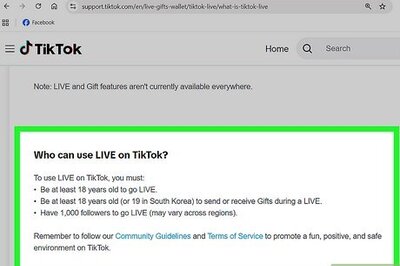
views
LIC IPO Share Allotment: After the initial public offering (IPO) of LIC ended for subscription on Monday, all eyes will be on the share allotment process. The LIC IPO has garnered a healthy response from investors as the offer has subscribed 2.95 times, receiving bids for 47.83 crore equity shares against LIC IPO size of 16.2 crore equity shares in total, as the six-day long subscription came to an end. The portion set aside for policyholders has been subscribed 6.11 times, employees bid 4.39 times the allotted quota, and retail investors 1.99 times, while the reserved portion of qualified institutional buyers have booked 2.83 times and that of non-institutional investors 2.91 times. Shares of LIC will be listed on BSE and NSE on May 17. The share allotment of LIC may be finalised on May 12.
For LIC IPO applicants in retail, policyholder, and employee category, it would be interesting for them to know how allotment of shares will be done for various categories. As per the information available on Zerodha, the basis of share allotment will be done on draw of lots for retail category applicants whereas share allotment for policyholders and employee category applicants will be done on a proportionate basis.
Here is what draw of lots and proportionate basis of allotment mean, in retail category, share allotment will be done on the basis of draw of lots which means allottees will get lots through allotment or a minimum of 15 LIC shares if their application gets through the lucky draw. however, in the case of the policyholders and employees category, all applicants will be given at least some share(s) on a proportionate basis which means here share allotment won’t be done on the basis of lots. So, one should apply as much of lots as one can if it falls under the category of LIC policyholder and employees category. by doing this, they will be able to enhance their chances of getting more LIC shares.
Here’s How to Check LIC IPO Share Allotment Status on NSE
-Go to NSE’s official website — https://www.nseindia.com/
-Go to the “equity” option and select “LIC IPO” from the drop-down menu.
-Enter your application and PAN Card number.
-Complete the “I am not a robot” verification and access your LIC IPO share allotment status.
To check the LIC IPO share allotment on BSE, follow the same procedure here — https://www.bseindia.com/
LIC IPO GMP Today
On Monday, LIC IPO’s grey market premium (GMP) was seen sliding lower. LIC shares were quoting a premium of Rs 40 per share in the unlisted market after a fall of Rs 20 over the weekend.
The government, which raised Rs 20,500 crore from the sale of 3.5 per cent of its stake in the country’s largest insurer, said that the issue was an example of ‘Atmanirbhar Bharat’ (self-reliant India) and the issue saw interest from a cross section of investors. Department of Investment and Public Asset Management (DIPAM) Secretary Tuhin Kanta Pandey termed the response to the IPO as “tremendous”, adding that the issue saw good participation from all categories of investors.
According to market observers, LIC IPO rollout has attracted a large number of new investors from tier-II and tier-III towns. They suggest investors buy LIC stocks with long-term prospects rather than short-term.
LIC was formed by merging and nationalising 245 private life insurance companies on September 1, 1956, with an initial capital of Rs 5 crore. Its product portfolio comprises 32 individual plans (16 participating and 16 non-participating) and seven individual optional rider benefits. The insurer’s group product portfolio comprises 11 group products.
Read all the Latest Business News here




















Comments
0 comment